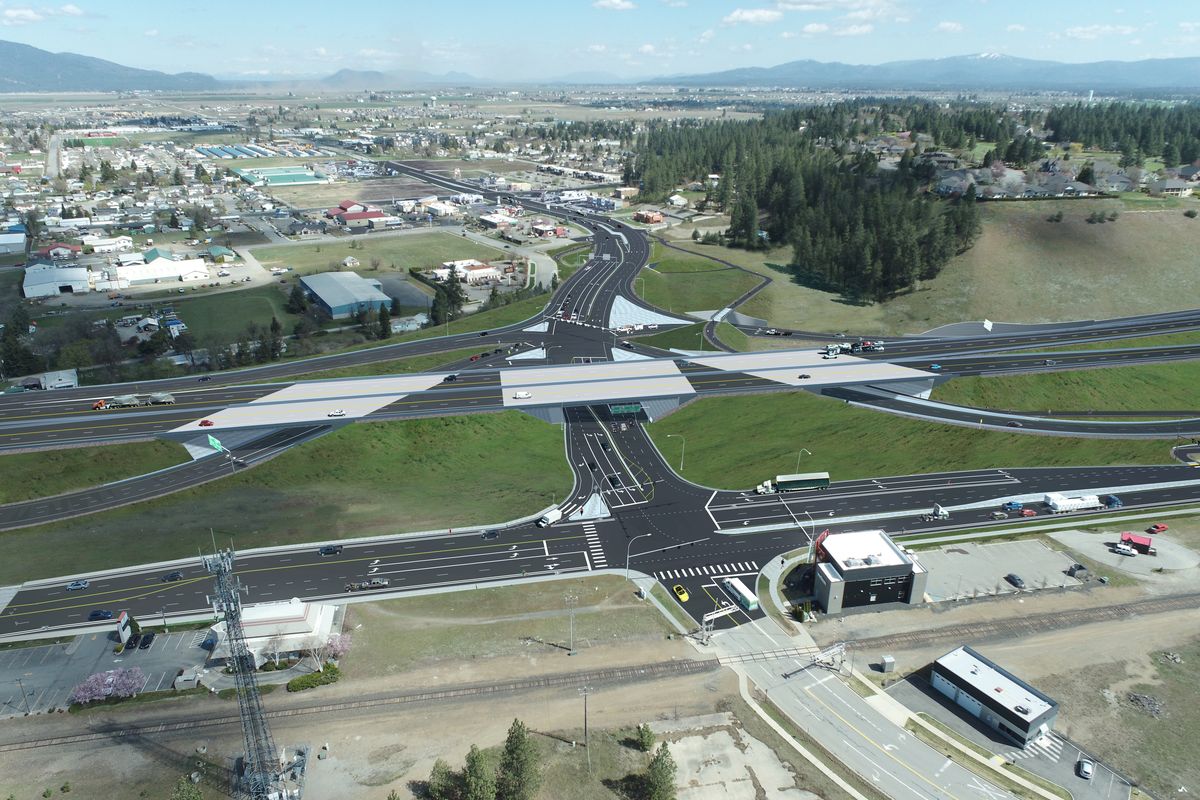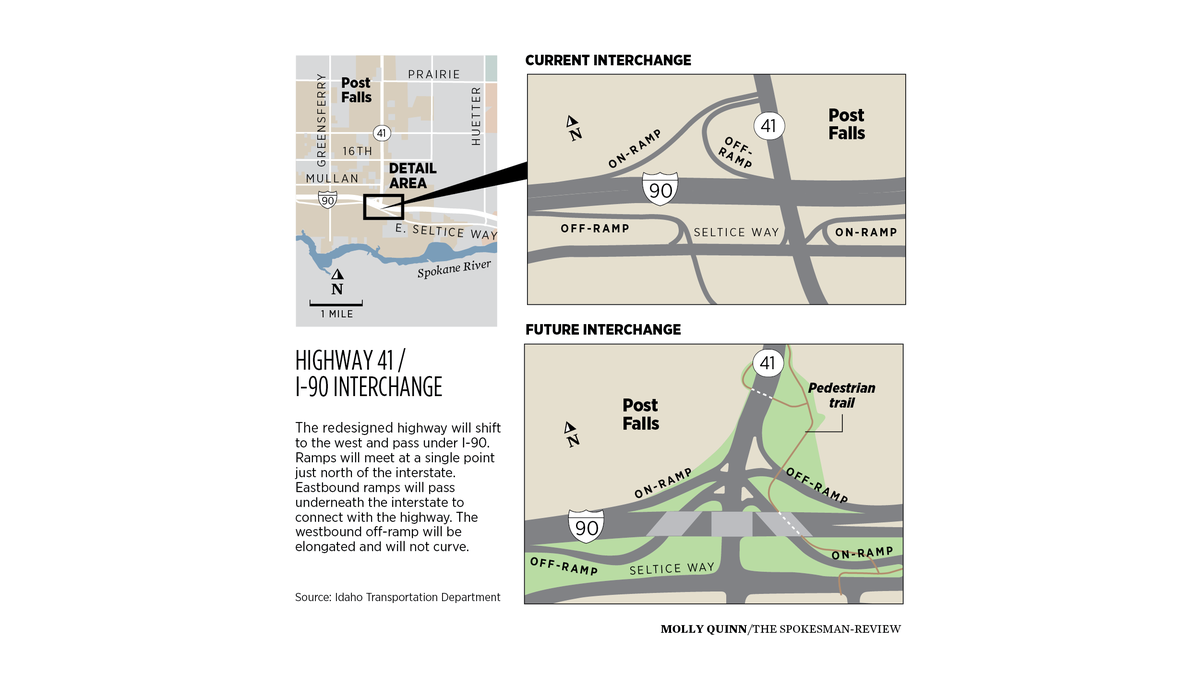Getting There: $78M Post Falls I-90 interchange to start construction early
The $78-million interchange is called a single point urban interchange, or SPUI (pronounced spoo-ee). It reduces the number of traffic lights in the interchange to one. (Courtesy of Idaho Transportation Department )
The Idaho Transportation Department began construction on a $78-million interchange replacement in Post Falls last week, one year earlier than originally planned.
The project will replace and upgrade the existing Interstate 90 and state Highway 41 interchange to “improve safety, move people more efficiently, increase capacity,” said John Tomlinson, communications manager for ITD. It will also improve pedestrian access.
Post Falls City Engineer Bill Melvin said that although the current five-leg interchange is only a couple of decades old, “we’re at a point where we’ve just overgrown that.”
“Many people call it dysfunction junction,” said Post Falls Mayor Ron Jacobson of the current interchange. It “just does not move traffic well, and with continued growth in the area, we do need to improve traffic flow.”
Development in the region has boomed in recent years, the city of Post Falls’ population increasing 27,000 to 38,000 from 2010 to 2020, a growth of over 40%, according to U.S. census data.
“There’s a critical interdependency between land development and transportation,” said David Callahan, Kootenai County community development director. “In a case like ours, where we are growing, trips generated from land development can very quickly outpace road capacity.”
According to an ITD traffic study, traffic on Highway 41, Seltice Way, and interchange ramps is expected to more than double in the next two decades. I-90 traffic is expected to increase by about 30%.
Already, Melvin said, “the interchange doesn’t always clear, there’s traffic that spills back up onto I-90 in peak hours.” Due to existing and predicted traffic increases, safety concerns are among the central motivations for the project.
“They didn’t design it for today, they are designing it for ultimate build-out within the region,” he said.
In determining how to address the interchange overhaul, ITD hosted two open houses in 2018 and 2019 to get community input on the design.
“We heard a lot about the importance of maintaining that local connectivity,” Tomlinson said, emphasizing the community’s role in the planning of pedestrian and bike paths included in the new designs.
The plan that ITD eventually settled on is called an offset single point urban interchange, or SPUI (pronounced spoo-ee) for short. Unlike a traditional interchange, the SPUI has just one traffic signal controlling all interchange traffic, with just three light cycles as opposed to four.
The single-signal interchange will be a significant efficiency improvement from the current interchange, which has three signals, according to Tomlinson.
Driving on the SPUI will be different at first, but Tomlinson emphasized that signage and education on using the new interchange will be plentiful.
“We want to make sure it’s as safe as possible,” he said.
The project will be built in phases through 2025. For 2022, crews will work along I-90 constructing new ramps and bridges.
Throughout the project, two lanes of I-90 traffic will flow through the construction area in each direction during the day. Intermittent lane restrictions will occur at night.
The construction begins one year ahead of schedule, in part because of funds through Idaho Gov. Brad Little’s “Leading Idaho” initiative, Tomlinson said.
“This really speaks to the importance that Gov. Little has put in transportation” Tomlinson said.
Additional funding for the $78 million project comes from state and federal sources, Tomlinson said.
“It’ll be inconvenient on the construction side,” Mayor Jacobson said, “but the end result is going to be much improved traffic flow, and I think that’s critical.”
Kelly Bigard, an employee at Huckleberry Thicket gift shop just off of the interchange, agreed.
“Yes, it’ll be an inconvenience, but it’s something that’s got to be done.”

